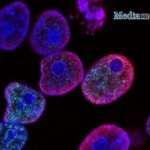
Editor’s Note: In recent years, the incidence of urologic malignancies in China has continued to rise, with prostate, bladder, and kidney cancers now ranking among the most common tumors nationwide and posing a significant threat to public health. During the recent National Cancer Center Urologic Oncology Symposium & Medical Frontiers Forum (Autumn Session), Oncology Frontier – UroStream invited Prof. Sujun Han from the National Cancer Center / National Clinical Research Center for Cancer / Cancer Hospital to discuss treatment strategies that improve patient survival and their implications for clinical decision-making.
**01
Oncology Frontier – UroStream** As a leading expert in urologic oncology, which recent therapeutic strategies or updated clinical concepts do you believe have most significantly improved survival outcomes for patients?
Prof. Sujun Han:
Improving cancer survival today rarely depends on a single intervention—it requires a comprehensive, multidisciplinary approach. In my view, three areas are particularly crucial for raising the five-year survival rate of cancer patients in China.
1. Early detection and early treatment The National Cancer Center has been actively promoting early diagnosis and early intervention for various cancers, including prostate cancer. Detecting disease at an early stage and intervening promptly can not only effectively control progression but also dramatically improve prognosis. Under the leadership of President Nianzeng Xing, we are working to increase public awareness of early warning signs and expand access to diagnostic technologies.
2. Standardized care to bridge regional disparities Significant differences exist in medical resources and treatment standards across regions—coastal vs. inland provinces, urban vs. rural areas. To address this, the National Cancer Center has established quality-control committees for specific cancer types. Their mission is to ensure that clinicians nationwide follow consistent, evidence-based guidelines. This helps guarantee high-quality care for all patients and elevates the overall professional level of the field.
3. Advances in precision medicine Breakthroughs in molecular biology have made precision therapy a reality.
- In urologic cancers, antibody–drug conjugates (ADCs) combined with immune checkpoint inhibitors (ICIs) have delivered unprecedented efficacy in advanced urothelial carcinoma, significantly improving both PFS and OS compared with the traditional GC regimen.
- In prostate cancer, new treatment modalities such as PSMA-targeted radioligand therapy have emerged.
These innovations are reshaping traditional treatment models and offering new hope for extending patient survival. As more actionable targets and mechanisms are discovered, we anticipate even more transformative therapies that will drive continued progress in cancer prevention and treatment.
**02
Oncology Frontier – UroStream* How do these emerging therapies influence clinical decision-making? How should clinicians rationally evaluate their benefits while recognizing challenges that may arise?
Prof. Sujun Han:
The first issue to consider is drug accessibility. Some domestically developed ADCs are already widely used in clinical practice. In contrast, the use of certain imported drugs remains limited due to restricted indications or high costs. However, as more clinical evidence accumulates and indications expand, we expect increasing inclusion of these innovative agents in national reimbursement programs. Supplemental insurance plans such as Beijing’s “Hui-Min-Bao” are already helping reduce patients’ financial burden, enabling broader access to advanced therapies.
Second, regarding efficacy, novel targeted agents are generally more precise and effective than traditional approaches and often exhibit a more favorable safety profile. That said, they may cause unique adverse effects distinct from those of chemotherapy—such as peripheral neuropathy or dermatologic reactions. As clinical experience grows, physicians are becoming more adept at managing these AEs, allowing patients to derive maximal benefit. For example, in advanced urothelial carcinoma, combined targeted and immunotherapy regimens have already produced substantial improvements in both PFS and OS.
In summary, although new therapies inevitably come with initial challenges, accumulated clinical experience will continue to optimize their use—and patient outcomes will improve accordingly.

Prof. Sujun Han


